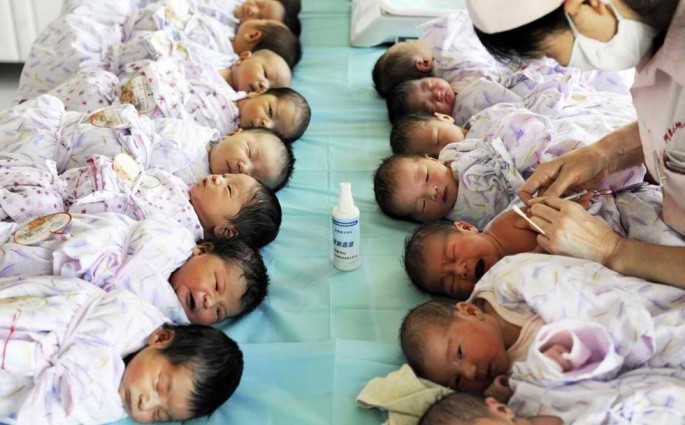China has launched a new campaign aimed at controlling the sex ratio of newborns, rebalancing the issue of gender inequality in the country.
The recently unveiled initiative includes efforts of cracking down on gender exams as well as illegal abortions.
According to latest statistics, the registered birth ratio between girls and boys tallied 100 to 115. The figure is higher than the worldwide average newborn sex ratio of 102 boys for every 100 girls.
In a statement released by the National Health and Family Planning Commission via its website, it said that "the gender imbalance in [China] is the most serious in the world, and has lasted for the longest period of time and affected the largest number of people."
Li Bin, the commission's chairperson, said that one of the major reasons causing the disproportionate ratio is the pre-knowledge of the child's gender.
"Fetus gender exams and abortions are the direct reason for the unusual sex ratio of newborns in China," Li remarked.
Li also revealed that approximately 8,000 cases of abortions were document last year. However, only a minute portion of the statistic received serious punishments.
Driven by both market demand and potential high profits, the number of cross-regional cases has been on the rise. "It even generated an illegal industry chain in some areas," she emphasized.
The new campaign of the country's family planning bureau will focus on agencies and clinics suspected of offering gender exams and illegal abortion services.
Gender exams, under the law, are only allowed for certain medical reasons.
Scholars have long pointed out preference for boys, especially in the country's rural regions, as the culprit behind the growth of illegal abortions and gender exams.
Nicholas Eberstadt, an American Enterprise Institute scholar, said that the gender imbalance in China can be rooted from the "terrible collision" of a "ruthless son preference."
By the end of 2014, the Chinese populace tallied to 1.36 billion, 700 million of which are men while 667 million are women.



























